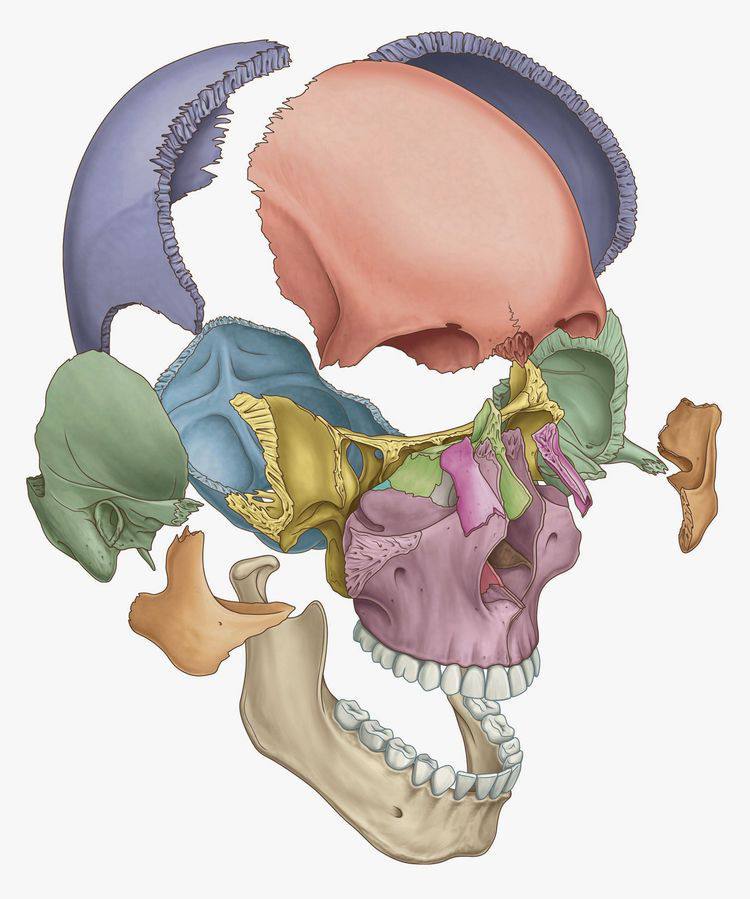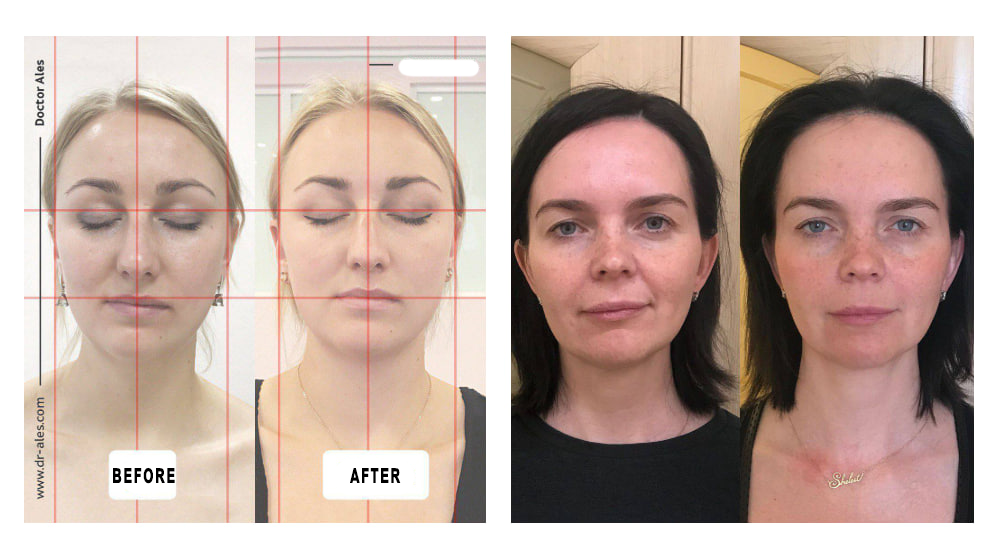Why facial asymmetry occurs and how to work with it.
The skull consists of 23 bones with joints between them. With age, the skull ossifies, but still retains plasticity within the joints. The bone itself is not made of iron 😅 and under the influence of tense ligaments, fascia, dura matter attached to it, it can change its geometry.

In the end, facial proportions depend on:
⠀
1️⃣ BODY PROBLEMS
When the pelvis is tilted, the shoulders are at different levels, there is a distortion of posture, such body misalignments can have an effect on the face through the musculofascial chain system - one half “floats”.
⠀
2️⃣ SKULL ISSUES
Tension at the base of the skull, dura mater can come from the foetal period, labour and birth trauma, as well as trauma acquired later.
⠀
Skull dysfunctions can lead to torsion (twisting) and rotation of the bones, from which facial asymmetries arise.
▪️ If the bones of the base of the skull are in one position - in an opening - the face becomes more rounded, if in another - more angular.
⠀
▪️ If torsion occurs and certain parts of the face are in an opening and others are in a closing position, it leads to facial misalignment.
⠀
▪️ In traumatic dysfunctions, the skull may resemble a parallelepiped. Or there may be pronounced frontal cusps. Or conversely, the forehead may be disproportionately small compared to the ‘prominent’ lower jaw.


3️⃣ MASTICATORY MUSCLE TONE
contributes to facial asymmetries because they are attached to the skull and tension is easily transferred.
⠀
Look at the photo of how asymmetry is corrected with faceplasty sessions 😍 This is sometimes much more effective than plastic surgery and is completely safe and healthy 👍
As a rule, asymmetry can be levelled from 30 to 100% and in this case Faceplasty is a super method, because we personally apply the methodology of correction in practice with our patients, which we teach in our Academy.